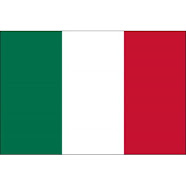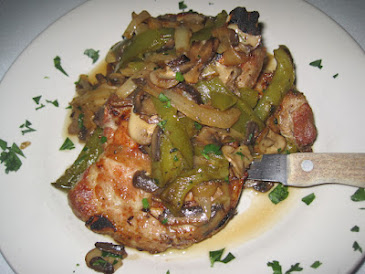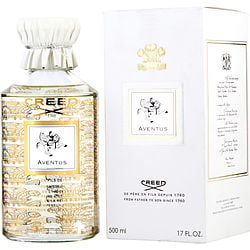#LondonPeachy #CulturedPeachy @NationalGallery TAKE ONE PICTURE Orazio Gentileschi, The Finding of Moses (early 1630s) 9 June – 11 September 2022
TAKE ONE PICTURE
Orazio Gentileschi, The Finding of Moses (early 1630s)
9 June – 11 September 2022
Sunley Room
Admission free

This year, the National Gallery will showcase artworks by primary school children from across the UK in the 27th annual Take One Picture exhibition.
Each year the Gallery invites primary schools nationwide to focus on one of its paintings and respond creatively to its themes and subject matter, historical context, or composition. The programme aims to put art at the centre of children’s learning across the curriculum, inspiring a lifelong connection with artists’ work, museums and galleries.
This year the National Gallery has selected The Finding of Moses (early 1630s) by Orazio Gentileschi as the source of inspiration. The painting was recently acquired by the Gallery in 2019.
This year’s Take One Picture exhibition showcases children’s creative responses to the painting, ranging from woven baskets and handmade jewellery, to painted landscapes and animals of the Nile. Their projects make links between art and subjects across the curriculum such as History, Geography and Religious Studies.
In the vast canvas of The Finding of Moses, Gentileschi depicts the Old Testament story by the same name (Exodus 2:2-10). When Pharaoh decreed that all newborn sons of Hebrews should be killed, the infant Moses was placed by his mother in a basket and hidden in bulrushes to ensure his safety. Moses’s sister Miriam hid nearby and watched as Pharaoh’s daughter came to bathe in the River Nile, accompanied by her ladies-in-waiting. They discovered the basket and infant inside and the Pharaoh’s daughter proposed to take him back to the palace. Miriam came forward and offered to find someone to help nurse the baby, fetching her own – and Moses’s – mother.
Nine female figures crowd around the basket at the heart of the composition. The woman in the magnificent yellow gown embellished with jewels is Pharaoh’s daughter. The figure kneeling respectfully at lower left is Moses’s sister Miriam, and beside her, dressed in red and white, is her mother.
The Finding of Moses was commissioned by Charles I of England for his wife, Queen Henrietta Maria, almost certainly to celebrate the birth of their son and heir, the future Charles II. It originally hung in the Queen’s House at Greenwich, on the banks of the River Thames.
Some schools were inspired by Moses’ journey, thinking about who he might meet along the way, and hoping that he would be safe and warm. Others wondered what this experience would have been like for his mother, having to give up her child and not knowing if she might see him again. Many projects were inspired by the women’s poses, leading to conversations around storytelling through gesture. Children thought about different types of non-verbal communication and learned about symbols and sign language. Gentileschi’s interpretation of this story led classes to wonder what the scene might look like if set in a different time or location. Some children acted as models to create modern versions of the painting, and others explored their own local landscapes.
Together with Anthony van Dyck and Peter Paul Rubens, Gentileschi was one of the leading international painters who came to work at the court of Charles I in England. The paintings he produced in London are characterized by their rich colouring, skilful rendering of luxurious fabrics and courtly elegance. Of all his royal commissions, The Finding of Moses is the most ambitious and displays unparalleled refinement and beauty. One of only a handful of paintings Gentileschi produced in London, The Finding of Moses once hung in the Great Hall of the Queen’s House at Greenwich.
There are thirty schools represented in this year’s display. Year 6 students at Combe St Nicholas CE VA Primary School, Somerset, visited a local park and discovered a basket that teachers had hidden by the river’s edge with a baby doll inside. They asked why someone would give up their baby and started to talk about different instances when families have protected their children by sending them away.
‘We learned about The Finding of Moses, which is a picture that tells us that a baby got put in a river for safety. The Pharaoh’s daughter found the baby and took him to safety from the Pharaoh who wanted to kill all the baby boys. Mothers would send a child away because of natural disasters or wars like WW1 or 2 … so they could have a better life at another place.’
Children in Reception Class at John Bunyan Primary School, Essex, were concerned that baby Moses might get eaten by a shark in the Nile. This led them to investigate what kind of animals live in the river, and to make their own versions from cardboard and papier mâché. They then made a fabric river and wore their creations to re-enact a scene by the Nile, exploring animal movements and sounds.
‘The papier mâché was easy. We learnt to dip it in glue, squeeze it and then slap it on!... We liked painting the crocodile. We made green with yellow and blue. There are sharks in the sea but not in the Nile!’
Year 3 students at St Robert’s First School, Northumberland, had lots of questions about the bare feet that they could see in the painting. Some of the feet were dirty, so they must have left footprints in the mud. They decided to make footprints in paint to see how that might have felt and photographed their feet using iPads. A local podiatrist helped them to find out more about feet and make slipper casts and plasticine models.
‘We wanted to know about why the ladies had dirty feet. A podiatrist taught us about how our feet move and why they make footprints. When we made the foot casts, the plaster bandages felt surprisingly warm and it was fun to make our feet with the soft plasticine.’
Karen Eslea, Head of Learning and National Programmes at the National Gallery, said ‘By putting a painting at the centre of their learning, the children have discovered so much, not only about the painting itself, but also about a wide range of subjects including history, geography and storytelling. Their curiosity and creativity offer great insight with their interpretations enriching the artwork for all of us. Thank you to all the wonderful teachers and children who have taken part and inspired us this year.'
Image: Orazio Gentileschi, The Finding of Moses (early 1630s). © The National Gallery, London
About Take One Picture
Launched in 1995, Take One Picture is the National Gallery’s countrywide scheme for primary schools. Each year the Gallery focuses on one painting from the collection to inspire cross-curricular work in primary classrooms. After a one-day Continuing Professional Development (CPD) course at the Gallery, teachers are given a variety of resources to support classroom learning. The challenge is then for schools to use the image imaginatively, both as a stimulus for artwork, and to make links across the curriculum.
Each year a selection of work produced by schools based on the painting is shown at the National Gallery and published on the website. In order to be considered for the display, schools submit examples of how a whole class or school has used the picture to inspire projects that are child-led and cross-curricular and through which children have learnt a new process and involved people or places in the local community.
Further information about the programme, related CPD courses for teachers, and the annual Take One Picture exhibition at the National Gallery can be found at https://www.nationalgallery.org.uk/take-one-picture
About Orazio Gentileschi (1563 – 1639)
Born in Pisa, into a family of artists, Orazio Gentileschi’s (1563 – 1639) life and career spanned a period marked by significant artistic movements and innovations: from the late Mannerism of his early paintings to the revolutionary style of Caravaggio, which he adopted for a short time in Rome, and a courtly ‘international’ style, whose elegance and refinement characterise his mature works.
Despite having a ‘difficult, arrogant, and vindictive’ character, Orazio enjoyed an international career working across Italy – in Rome, Ancona, Fabriano, Genoa, and Turin – as well as in Paris and London. He counted noblemen and monarchs among his patrons and spent the last twelve years of his life in England at the court of King Charles I, joining the ranks of other celebrated artist-diplomats who travelled to London, Anthony van Dyck and Peter Paul Rubens. From around 1600 Orazio is known to have associated with Caravaggio, then emerging as Rome’s most innovative painter. Under Caravaggio’s influence, Orazio’s paintings began to assume greater naturalism, but his Caravaggesque phase was short-lived and he soon reverted to a more elegant style and varied colour range.
Orazio’s wife Prudentia di Montone died in 1605, leaving him with four children – three sons and a daughter, Artemisia – whom he trained in the art of painting. Though Artemisia pursued an independent career in Florence and became an artist of considerable success, Orazio’s sons stayed with him and later accompanied him to London. In the first decade of the seventeenth century Orazio’s career began to take off, as he became a member of the Congregazione dei Virtuosi al Pantheon (1605) and produced mosaics for the basilica of Saint Peter’s. In 1611–12 he painted frescoes alongside Agostino Tassi in the Palazzo del Quirinale and Scipione Borghese’s Casino delle Muse. In March 1612 Orazio pressed charges against Tassi for ‘deflowering’ his daughter, Artemisia – the lengthy trial resulted in Tassi’s conviction and Artemisia’s departure for Florence. Although Orazio continued to gain commissions and broaden his private clientele (including the powerful Savelli family), it seems that the trial may have compromised his career prospects in Rome.
A pivotal moment in Orazio’s career came in 1621 when he was invited to Genoa by Giovan Antonio Sauli and worked for the Duke of Savoy in Turin. He then spent a period of time working at the courts of Queen of France, Maria (Marie) de’ Medici in Paris, Charles I and Queen Henrietta Maria.He died following an illness in 1639, aged seventy-six, and was granted the honour of burial in the Queen’s Chapel at Somerset House.
About Columbia Threadneedle Investments
Columbia Threadneedle Investments is a leading global asset manager that provides a broad range of actively managed investment strategies and solutions for individual, institutional and corporate clients around the world. With more than 2000 people including over 450 investment professionals based in North America, Europe and Asia, it manages £373bn of assets (at 31 Dec 2019) across developed and emerging market equities, fixed income, asset allocation solutions and alternatives.
Columbia Threadneedle Foundation is committed to investing in the community through partnerships that create positive social impact. It focuses on charities that use education, art and sport to engender lasting social change. Common threads in its programmes and charity partners include the ability to build skills and confidence, challenge perspectives, and broaden horizons.
The Bernard Sunley Foundation
The Sunley Room was established at the National Gallery in 1984 and the Foundation has supported the exhibition programme in the Sunley Room every year since 1990. The Bernard Sunley Foundation is a family grant-making foundation which supports charities in England and Wales that deliver a real community focus and provide greater opportunities for the young, the elderly, the disabled and the disadvantaged.
Schools represented in the 2022 display
Bridgewater Primary School, Northampton
Caroline Chisholm School, Northampton
Combe St Nicholas CE VA Primary School, Somerset
Earl’s Court Free School Primary, London
Frith Manor School, London
Grange Park School, Kent
Grimes Dyke Primary School, Leeds
Gunthorpe Primary School, Peterborough
Gurnard Primary School, Isle of Wight
Headlands Primary School, Northampton
Headley Park Primary School, Bristol
Hill Top CE Primary School and Nursery, Bradford
Holy Trinity CE Primary School, London
Icknield Primary School, Luton
John Bunyan Primary School, Essex
Kingswood Primary School, Gloucestershire
Mab’s Cross Community Primary School, Wigan
Pembroke Park Primary School, Salisbury
Pencalenick School, Truro
River Bank Primary School, Luton
Rothwell St Mary’s Catholic Primary School, Leeds
Runwell Community Primary School, Essex
Sellincourt Primary School, London
Snaresbrook Primary School, London
St Michael’s School, Essex
St Robert’s First School, Northumberland
Upton Meadows Primary School, Northampton
West London Free School Primary, London
Woodford Halse CE Primary Academy, Northamptonshire
Yewstock School, Dorset































































































